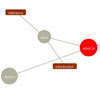Arbor is a graph visualization library built with web workers and jQuery. Rather than trying to be an all-encompassing framework, arbor provides an efficient, force-directed layout algorithm plus abstractions for graph organization and screen refresh handling. It leaves the actual screen-drawing to you. This means you can use it with canvas, SVG, or even positioned HTML elements; whatever display approach is appropriate for your project and your performance needs.
jQuery Runloop Plugin
With jQuery Runloop, you can create your own small runloop with keyframes at your own choosing, each with code to execute. You can put whatever code you want in each keyframe, rearrange keyframes easily, and use reusable maps of code and/or animations to share between runloops.
It was created to have more power, more control and less hassle than dealing with jQuery .animate() callbacks. It hooks into jQuery’s Effects Queue by design, to avoid timing conflicts in the case of doing many multiple .animate() calls.
jQuery WowWindow is an alternative Lightbox
WowWindow is an alternative to Lightbox, for jQuery, that is much more fun and powerful. This modal window script uses CSS3 transformations to display the window, but will acceptably degrade to a workable window for browsers that do not support this. If you’re looking for alternatives to Lightbox, this may be the perfect script for you.
jQuery’s Data Method – How and Why to Use It
jQuery’s data method gives us the ability to associate arbitrary data with DOM nodes and JavaScript objects. This makes our code more concise and clean. As of jQuery 1.4.3 we also have the ability to use the method on regular JavaScript objects and listen for changes, which opens the doors to some quite interesting applications.










